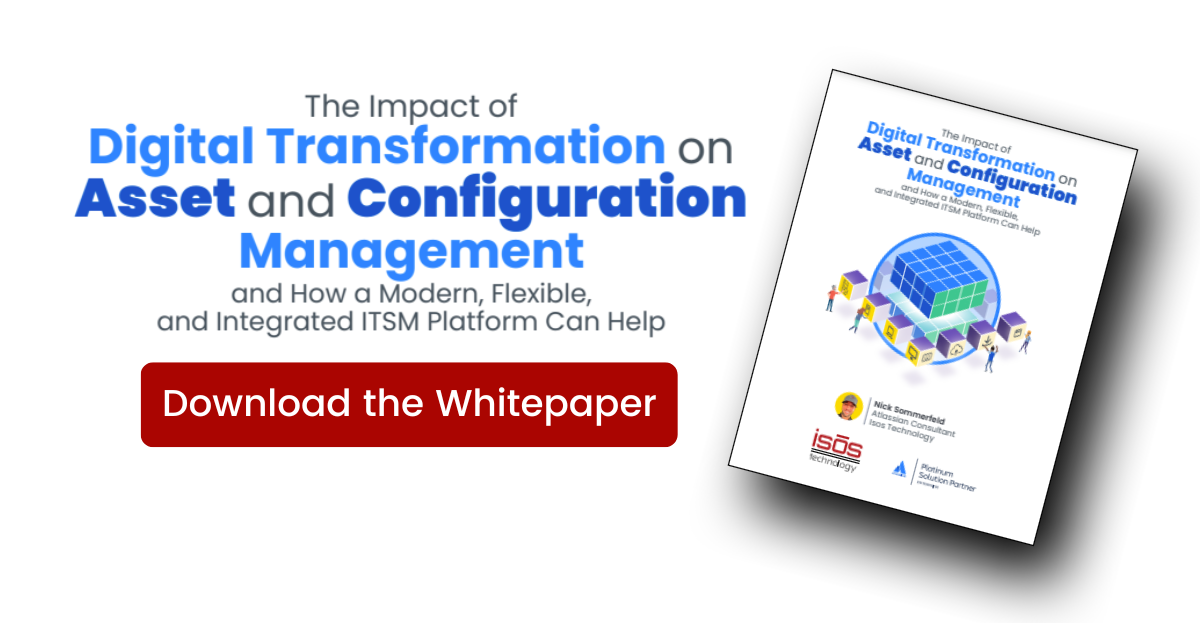 A lot has changed with team collaboration over the past few years. Many of us have transitioned to a fully remote work environment, so IT teams are getting more service requests than ever before. Business teams that lean on IT departments for service requests often experience longer wait times due to higher volumes, which is less than ideal. That's why it's so exciting that Atlassian has come up with some great ways to help teams that work differently come together around common goals. Here are some of the Jira Service Management features and functionality that make collaboration easier.
A lot has changed with team collaboration over the past few years. Many of us have transitioned to a fully remote work environment, so IT teams are getting more service requests than ever before. Business teams that lean on IT departments for service requests often experience longer wait times due to higher volumes, which is less than ideal. That's why it's so exciting that Atlassian has come up with some great ways to help teams that work differently come together around common goals. Here are some of the Jira Service Management features and functionality that make collaboration easier.
No-Code/Low-Code Form Builder
Jira Service Management comes with a no-code/low-code form builder for service requests, so any team in any department can create simple service request forms. And to speed things up even more, Atlassian rolled out over 300 (yes 300!) premade, out-of-the-box templates. That means there is now a premade template within JSM for almost any type of service request: legal contract reviews, change requests, HR requests, finance requests, travel requests, etc. There's even a template for catering requests! Even cooler, the templates can be used as-is or modified to fit the specific needs of each organization.
How does one create a new template for each request?
- Select your template of choice
- Drag and drop the fields that you want
It really is that simple! This feature means that every team can easily create a customized service experience, without heavy reliance on IT.
Built-in Knowledge Base for Self-Service
Jira Service Management agents can quickly create educational content for users to self-serve right in JSM--there is no need to go to Confluence! They can also collaboratively author the same knowledge-base articles simultaneously, making it so much easier to revisit and review each other's work. Agents can also provide contextual content by embedding media, either by uploading it straight into an article or attaching it using any of 40 different integrations (YouTube is one, for example). Last but not least, they can also use advanced formatting and tables, as well as embed flow charts, which can be especially handy when documenting processes.
Conversational Ticketing
Now, this is a feature that I am super excited about. Using HALP and PERCEPT.AI, both Atlassian acquisitions, employees can ask for and receive help with their service requests inside of Slack or Microsoft Teams. How cool is that? The best part of this integration is that these service requests are just like any conversation within Slack or Teams.
Let me explain how it works.
Once an employee submits a service request through either Slack or Teams, a ticket is automatically generated and synced with JSM through the integration. The PERCEPT.AI conversational AI engine analyzes and understands the intent and context of each request, and automatically provides the most relevant response, so people can get 24/7 support for simple requests.
I know what you're thinking: what if the request is too complex for automation? Not to worry! The PERCEPT.AI virtual agent has the smarts to automatically escalate those requests to a live support agent without losing context. Then, the IT support team can tailor the virtual agent to provide services the same way that they operate and deliver service, all without any coding required. The AI technology also learns from every interaction, with a top-of-the-line natural language processing engine that's 95% accurate!
Unified Help
It's no secret that the technology that powers enterprises can get incredibly messy. Teams are simply too diverse, and each of their needs are so specific, that they often end up using a bunch of different tools: multiple service desks, custom-built systems, form builders, and internal messaging systems. This makes it really hard for employees to know where to go for help.
Atlassian believes that employees shouldn't have to know! Unified Help is centered around building an experience that intelligently coordinates the routing and resolution of these requests into any tool, regardless of where the work is happening.
There are three simple steps to this journey:
- Receive service requests from any channel
- Understand the user intent
- Route the user to the right tool for resolution
Unified Help analyzes the content and user intent of each request, then wraps it and re-routes it so that the right team can resolve it. The request can not only be re-routed directly into Jira Service Management, but also to other tools, whether they're within the Atlassian ecosystem, like Trello or Confluence, or an external solution like Microsoft Office, or even something as simple as an email. Ultimately, the goal is to have the option of re-routing these requests over to a whole slew of other third-party applications, even other ITSM solutions.
At the end of the day, Atlassian's objective with all of this Jira Service Management functionality is to help organizations coordinate requests and get them into the right tool, so that resolving problems is fast and painless for employees.
The future of ITSM is Jira Service Management, where teams within an organization who operate differently can come together to meet common objectives. It's truly amazing!
Sign up to receive more great content
Learn more about Atlassian and how Isos can help by signing up to receive our latest blogs, eBooks, whitepapers and more.














